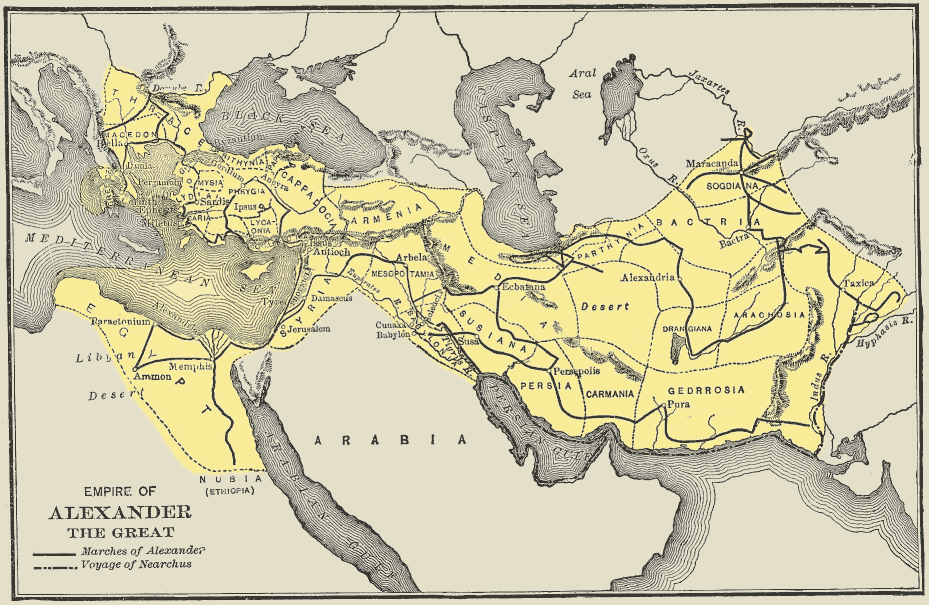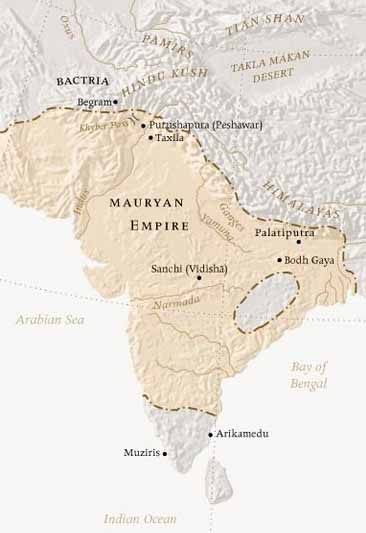
Posted on 02/20/2008 2:22:43 PM PST by blam
Pre-Mauryan lion head discovered
19 Feb 2008, 0441 hrs IST,Pranava K Chaudhary,TNN
PATNA: Archaeologists are baffled by the discovery of a pre-Mauryan period lion head made of stone from the dry bed of the Ganga at Collectorate Ghat here on Monday evening. This was made possible as the river has changed its course in recent years exposing its dry bed.
According to an expert, the one-and-half-foot stone artefact is similar to those of Greek sculpture.
Archaeological Survey of India (ASI) superintending archaeologist (Patna Circle) P K Mishra admitted that the lion head, in all likelihood, could symbolize the Mauryan royal palace structure. "Its hairstyle, eyes and moustache are similar to Greco art," he added.
ASI mechanic Siddheshwar Prasad accidentally came across the stone lion head on the dry river bed when he went to the Collectorate Ghat for a wash.
"When I saw this huge antique (around 50 kg), I carried it to the ASI's Anta Ghat-based office here," Prasad told TOI.
A team of archaeologists led by Mishra will visit the site on Tuesday to explore the area and find out whether more such antiquities are buried there.
"If required, I will make a preliminary excavation at the dry river bed to find out more details," Mishra said.
Left behind by Alexander the Great’s gang?
You do have a point!
Turn it over and it should say, “Made in China”.
Yet it looks Persian.
Simply Beautiful.
India has lions in the wild. It is the last home of the Asiatic lion.
Google Gir Lion to find more.
Alexander the Great never really entered India proper. What happened was he faced his most difficult battle with what was essentially a border chieftan, Porus.
Had Alexander managed to continue east into the Magadha kingdom, beyond the Indus (beyond the eastern portion of what is now Pakistan), he would not have been able to escape.



This is on the state capitol in Karnataka, southern India:


That is true, only and only if you consider India as it is currently mapped, at the time of Alexander that is not true. he went down the coast past what is now Karachi and then back to the mountains of what is now Punjab approximately. It was all called the Persian Empire at the time. But the point of the first writer was the item was probably left in the country by Alexander and his men, who moved it where after that time is anyone's guess.
As for Alexander moving along the Indus upto Karachi, it is still the western border region of what was India, then, too.
The most dominant power at the time was the Maghada kingdom, in central-eastern India.

Alexander's empire.

The kingdoms in India Proper at the time of Alxander.

The Mauryan Empire, after the time of Alexander.
|
|
|||
Gods |
Thanks Blam. |
||
|
· Mirabilis · Texas AM Anthropology News · Yahoo Anthro & Archaeo · · History or Science & Nature Podcasts · Excerpt, or Link only? · cgk's list of ping lists · |
|||
Its not a big deal to me whether or not some of Alexander's traveling artisans made the lion statute,
or whether they were made by the locals. I just read the title that a 'Grecian-style' (whatever that is)
Lion Head was discovered in India in a time-frame that was consistent with the time that Alexander the Great
entered the western regions of India (around the Indus river), and established some towns and outposts in the area.
It seemed plausible that Alexander's crew built the statute, but if you're saying that it was found a thousand miles to
the east - I agree, that probably wasn't the case
|
Magadha, Kingdom of. |
| IV. | Rise and Fall of an Empire |
Chandragupta Maurya, having established his rule in the Ganges plain and central India, lost no time in utilizing the opportunity left by Alexander in the north-west. He quickly marched towards the Indus, and with little difficulty conquered the lands of the west and Gandhara to the north. Seleucus Nicator proved a little harder to dislodge but, by 303 bc, he was defeated and pushed back westwards. The treaty with Seleucus appears to have involved a marriage alliance, and a present of 500 elephants to Seleucus (a fact noted with wonder by Plutarch) and the two leaders remained on friendly terms. Valuable descriptions of Chandragupta Maurya's court at Pataliputra are provided by Megasthenes, Seleucus's envoy. Pataliputra, the Mauryan capital, appears to have been a magnificent city, and would have been, at the time, one of the most important in the world, attracting visitors from both east and west. It was linked by a royal road following the old trade route to Takshasila (Greek, “Taxila”), in Gandhara, a centre for trade and learning which was to become increasingly important in the following centuries.
Chandragupta's son, Bindusara, extended the empire southwards down to Mysore, but it was the next king, Ashoka, who was able to take Kalinga in the east and, with treaties of friendship and cooperation with the far south (the splendour of the Mauryan army is described in Tamil literature), claim that the whole subcontinent was effectively under his control. Ashoka's extraordinary reign has been well documented, and little needs to be said in this context. The Mauryan emperors had been patrons to the religions that evolved in the Magadhan region, while also supporting the Brahmins. Ashoka, while becoming a Buddhist himself, continued to provide patronage to all religions. His approach of dhamma (Sanskrit, “dharma”) led to his many public works, such as the building of hospitals and shady resting places along the trade routes. This was quite against the policies given in the Arthashastra, as such actions did not provide any revenue for the state, and indicate how far the form and function of the state moved away from its Kautilyan roots in Ashoka's time. Quite apart from the principles that Ashoka brought into his rule, the sheer size and scale of the empire was severely testing the highly centralized methods of the state—it was proving unviable to run such far-flung areas effectively without some devolution of power to local agents. Ashoka himself toured the lands regularly, establishing a personal link with the people that helped to keep the empire together. Other weaknesses were also apparent, however. The Kautilyan state relied upon a web of secret agents: not a policy that is likely to succeed in the long run, particularly as the size of the empire increased. The army was expensive, and the reliance on a successful agrarian economy to provide the basis of revenue was also stretched by the inclusion of lands less efficiently farmed. Soon after Ashoka's death in 232 bc, the empire collapsed, although Magadha and surrounding areas remained in Mauryan hands until close to the end of the century.
http://uk.encarta.msn.com/text_761563378___5/Magadha_Kingdom_of.html
'...The treaty with Seleucus appears to have involved a marriage alliance, and a present of 500 elephants to Seleucus (a fact noted with wonder by Plutarch) and the two leaders remained on friendly terms...
['...and Seleucus said 'here, I'll throw in this lion knick-knack as part of the deal...']
Also - thanks for the interesting background information on Ashoka and the Maurayans. I had not heard of this empire.
Yup.
There was a thriving Indo-Greek empire in what is now northwestern Pakistan.
http://en.wikipedia.org/wiki/Seleucus_I_Nicator#Establishing_the_Seleucid_state
Establishing the Seleucid State
Doubt you'll find that in Wal-Mart for $1.88!
Disclaimer: Opinions posted on Free Republic are those of the individual posters and do not necessarily represent the opinion of Free Republic or its management. All materials posted herein are protected by copyright law and the exemption for fair use of copyrighted works.